Embarking on a coast-to-coast road trip across Canada is a journey of epic proportions, offering a myriad of landscapes that range from the rugged cliffs of Newfoundland to the lush rainforests of British Columbia. Spanning over 7,000 kilometers, this adventure takes you through diverse terrains, cultures, and experiences, showcasing Canada’s vast beauty and complexity. Along the way, travelers are treated to breathtaking scenic routes, unique wildlife sightings, and a taste of the country’s culinary diversity. This guide outlines ten must-visit destinations across Canada, providing insights into making the most of your cross-country exploration.
1. St. John’s, Newfoundland and Labrador
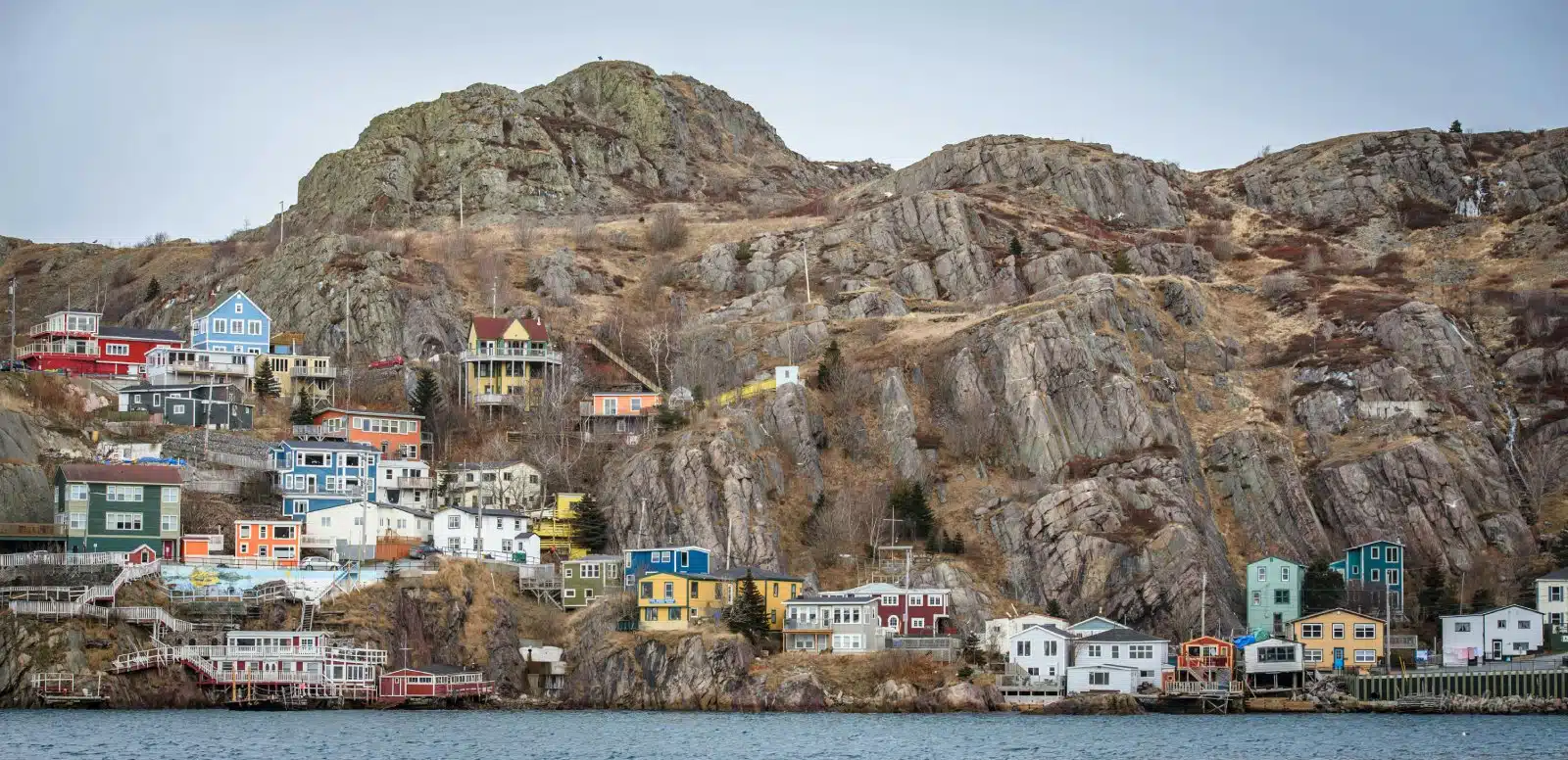
Image Credit: Pexels / Ritche Perez
St. John’s, the easternmost point in North America, is a vibrant city known for its colorful row houses and friendly locals. The city’s rich maritime history is palpable, with its bustling harbor and the iconic Signal Hill offering panoramic views of the Atlantic Ocean. St. John’s serves as a gateway to exploring the rugged beauty of Newfoundland, including the nearby Cape Spear Lighthouse and the dramatic coastline of the Avalon Peninsula.
Insider’s Tip
Don’t miss a boat tour around the Witless Bay Ecological Reserve, where you can spot puffins and icebergs, depending on the season.
When to Travel
The best time to visit St. John’s is during the summer months, from June to August, when the weather is mild and the days are long.
How to Get There
St. John’s International Airport serves as the main gateway, with flights from major Canadian cities and select international destinations. The city is also accessible by car via the Trans-Canada Highway for those coming from other parts of Newfoundland.
2. Gros Morne National Park, Newfoundland, and Labrador
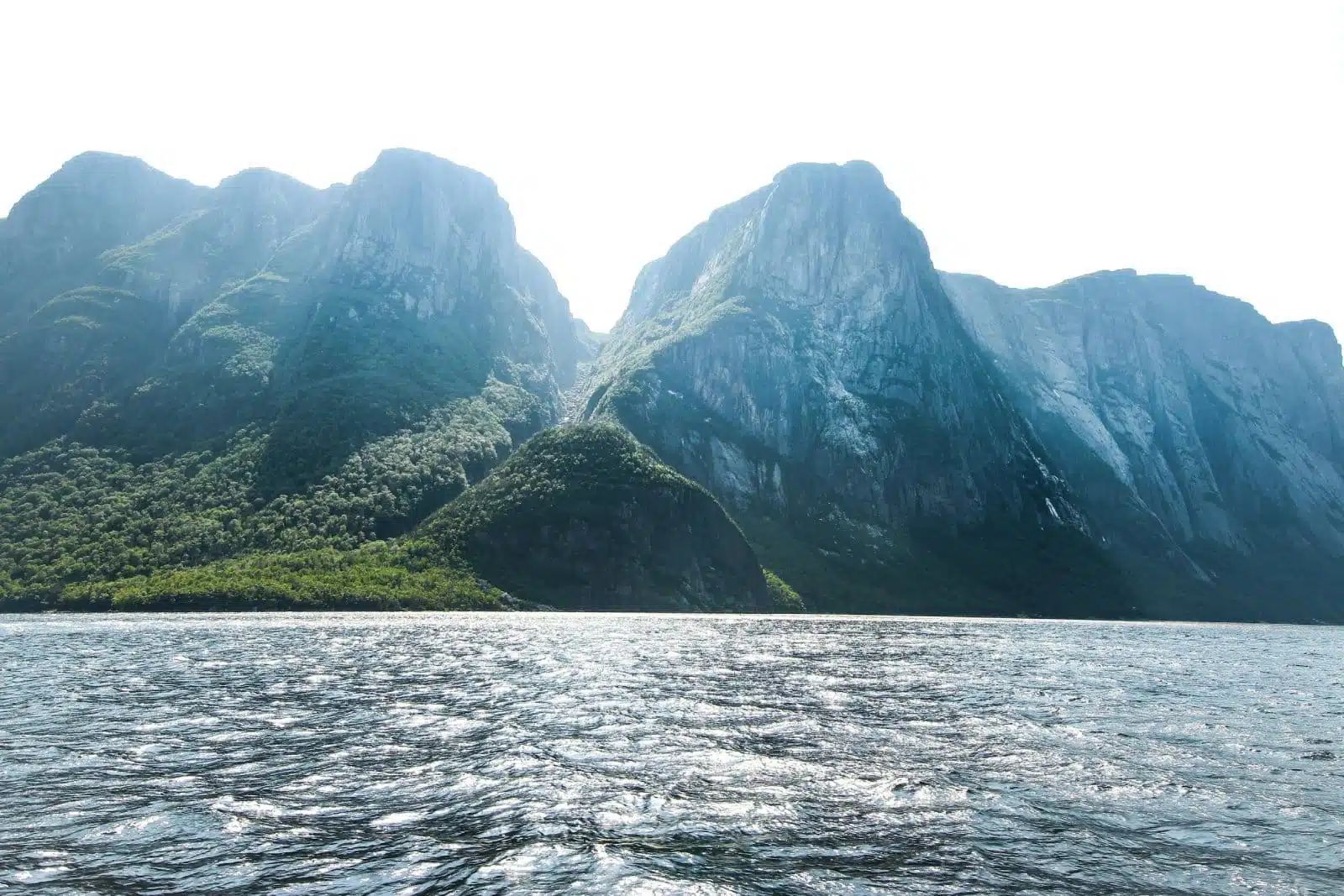
Image Credit: Pexels / Britt Pigat
A UNESCO World Heritage site, Gros Morne National Park offers some of the most stunning landscapes in Eastern Canada. Its diverse ecosystems range from coastal lowlands to towering fjords and mountains, providing habitats for an array of wildlife. Hiking trails, boat tours, and cultural experiences offer immersive ways to explore the park’s natural beauty and geological wonders.
Insider’s Tip
Take the boat tour on Western Brook Pond to witness the fjord’s sheer cliffs and waterfalls up close.
When to Travel
Late spring to early fall (May to October) is ideal for visiting Gros Morne. July and August offer the warmest weather for hiking and outdoor activities.
How to Get There
The nearest airport to Gros Morne National Park is Deer Lake Airport, about an hour’s drive from the park. The park is also reachable by car from St. John’s via the Trans-Canada Highway, a journey that offers scenic views and takes approximately 7 hours.
3. Quebec City, Quebec
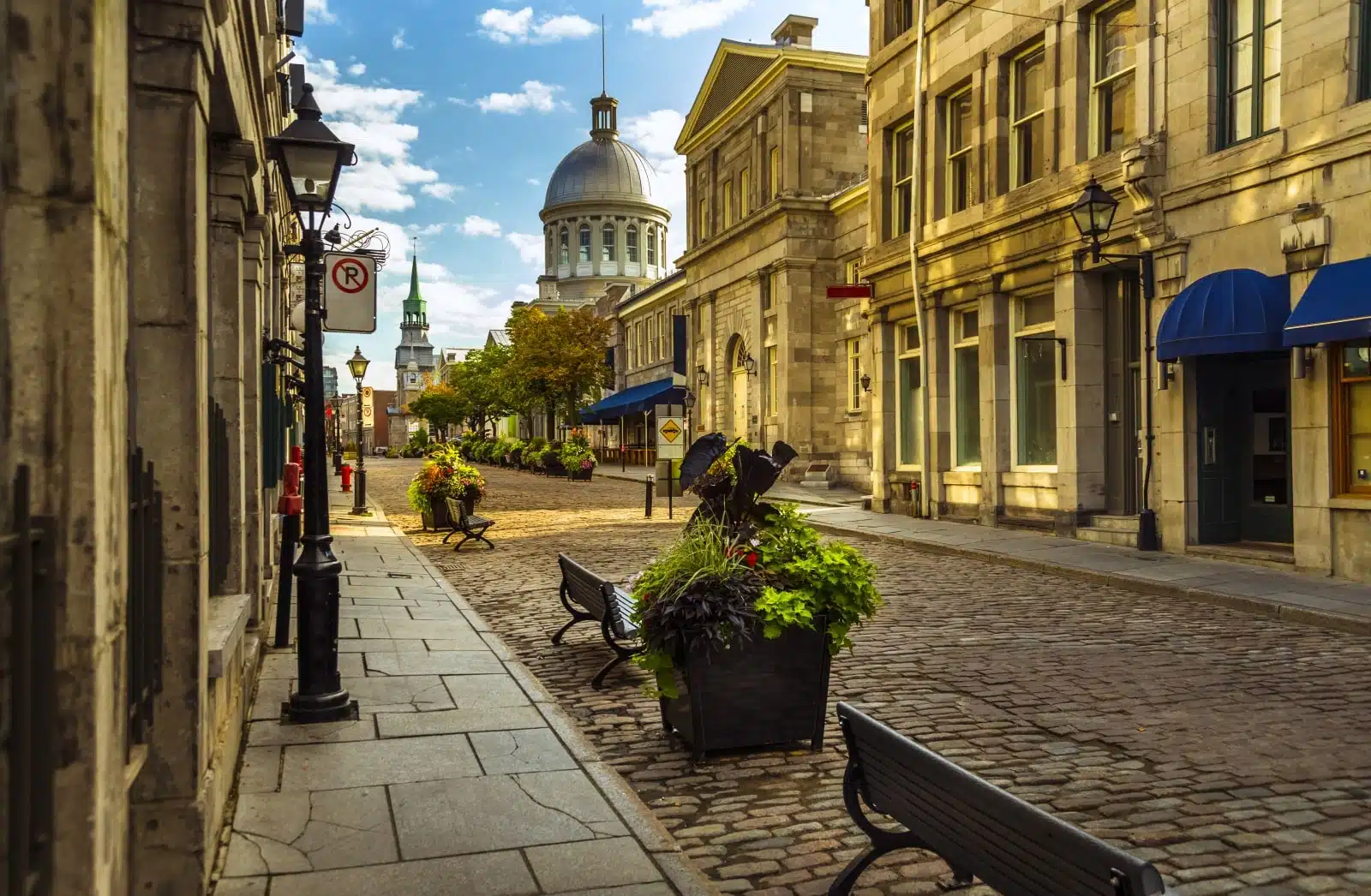
Image Credit: Shutterstock / ProDesign studio
Quebec City, one of North America’s oldest cities, enchants visitors with its European charm, cobblestone streets, and the majestic Château Frontenac. The city’s rich history is showcased in its preserved fortifications, the historic district of Old Quebec, and the vibrant cultural scene. Quebec City is also a gateway to the beautiful countryside of the Charlevoix region and the majestic Montmorency Falls.
Insider’s Tip
Explore the Petit Champlain district, known for its quaint boutiques and cafes, offering a glimpse into the city’s French heritage.
When to Travel
Quebec City is magical in all seasons, with the Winter Carnival in February being a highlight and the summer months (June to August) ideal for exploring the city and surrounding areas.
How to Get There
Quebec City Jean Lesage International Airport offers direct flights from major cities in Canada and the U.S. The city is also accessible by train via VIA Rail from Montreal and by car via Highway 20 (from the west) and Highway 40 (from the east).
4. Toronto, Ontario

Image Credit: Shutterstock / Spiroview Inc
Toronto, Canada’s largest city, is a melting pot of cultures, cuisines, and experiences. The city’s skyline, dominated by the CN Tower, offers a mix of modern architecture and green spaces like the Toronto Islands. Toronto’s diverse neighborhoods, from the historic Distillery District to the bustling Kensington Market, provide endless exploration opportunities.
Insider’s Tip
Catch a ferry to the Toronto Islands for a unique perspective of the city skyline and a peaceful escape from the urban hustle.
When to Travel
The best time to visit Toronto is from late spring to early fall (May to September), when the city is alive with festivals and outdoor activities.
How to Get There
Toronto Pearson International Airport is the primary airport serving the city, with extensive domestic and international flights. Toronto is also a major rail hub, with VIA Rail and Amtrak services. By car, Toronto is accessible via several major highways, including the 401, the busiest in Canada.
5. Banff National Park, Alberta
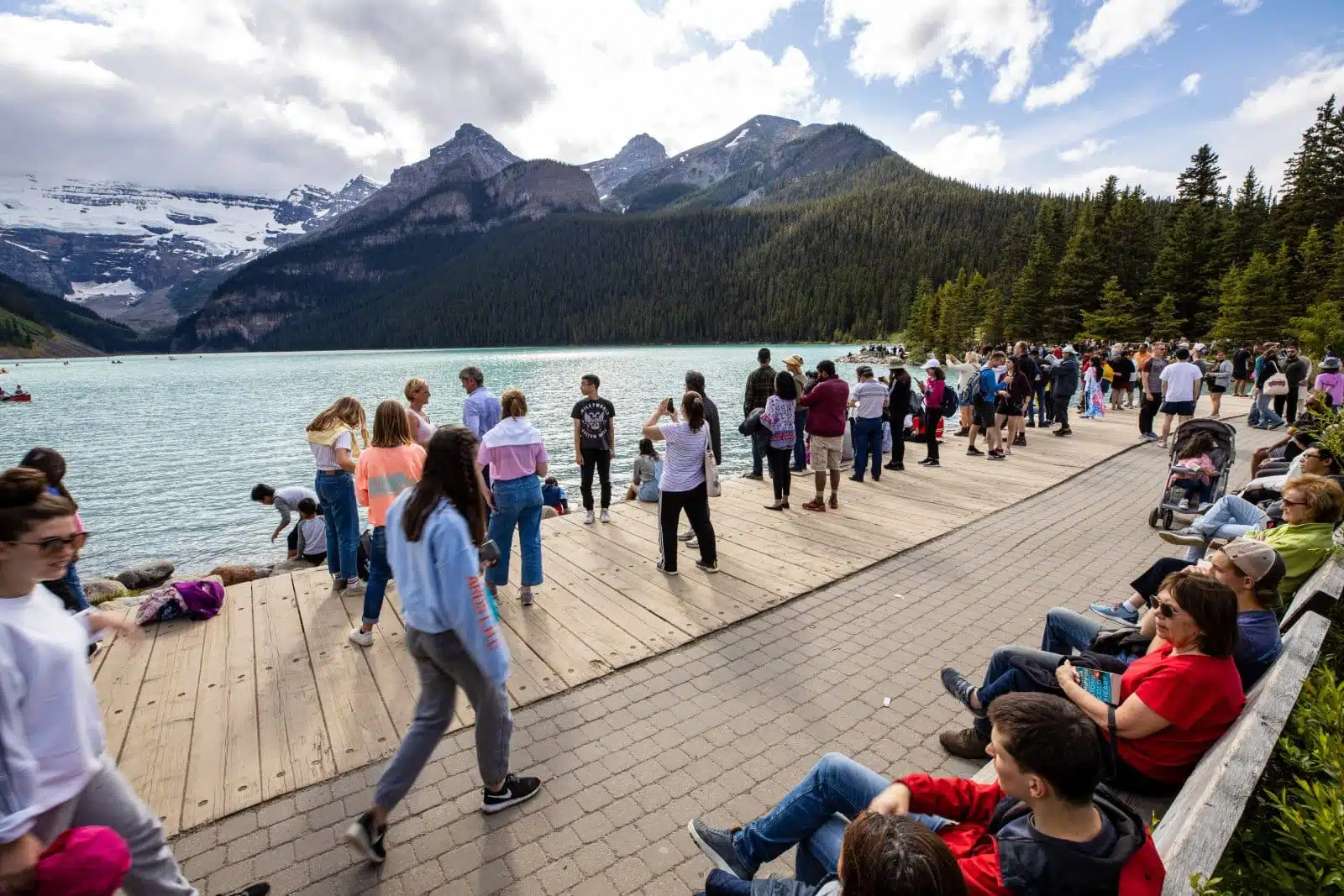
Image Credit: Shutterstock / hecke61
Nestled in the heart of the Canadian Rockies, Banff National Park is a haven for nature lovers and outdoor enthusiasts. The park’s turquoise lakes, including the iconic Lake Louise and Moraine Lake, contrast dramatically with the snow-capped peaks and glaciers, offering some of the most photographed landscapes in Canada. Banff provides a wide range of activities, from summer hiking and canoeing to winter skiing and snowboarding.
Insider’s Tip
Take the Icefields Parkway drive between Banff and Jasper for one of the most scenic routes in the world, featuring glaciers, waterfalls, and wildlife.
When to Travel
Summer (June to August) is the peak season for hiking and lake activities, while winter (December to March) offers world-class skiing and snowboarding.
How to Get There
The closest major airport is Calgary International Airport, about 1.5 hours drive from Banff. Shuttle services and car rentals are available at the airport. Banff is also accessible by the Trans-Canada Highway for those driving from other parts of Canada.
6. Jasper National Park, Alberta
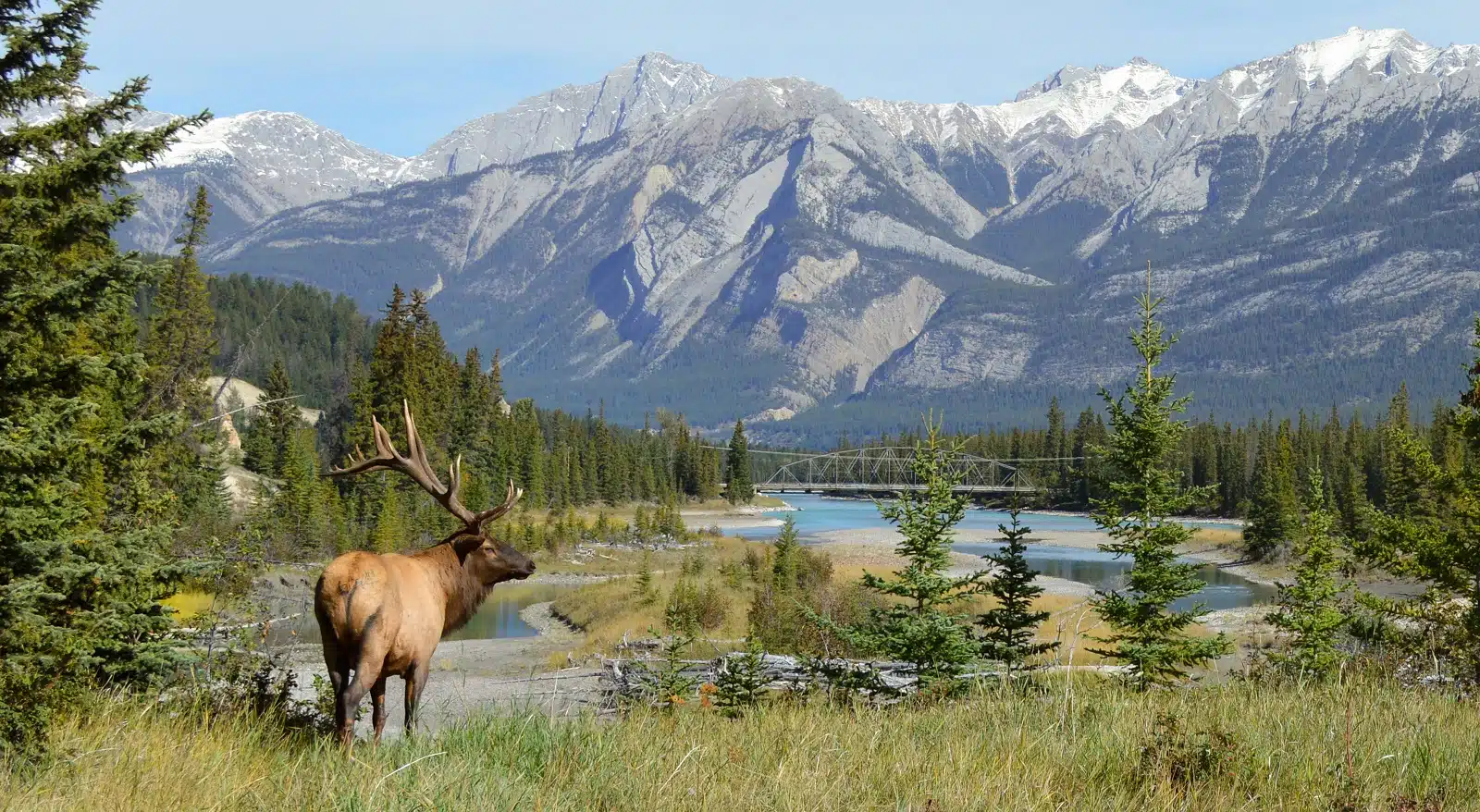
Image Credit: Shutterstock / Weekend Warrior Photos
Jasper National Park, more extensive and less crowded than Banff, offers a wilder experience of the Canadian Rockies. Its vast wilderness is home to an extensive network of trails, hot springs, and the dark sky preserve, perfect for stargazing. The park’s abundant wildlife, including bears, elk, and wolves, adds to the sense of adventure.
Insider’s Tip
Visit the Maligne Lake and cruise to Spirit Island, one of the park’s most serene and picturesque spots.
When to Travel
Similar to Banff, the best times to visit Jasper are during the summer for hiking and exploring and in the winter for snow sports.
How to Get There
Edmonton International Airport is the nearest major airport, about a 4-hour drive to Jasper. The park is also reachable via the Icefields Parkway from Banff, offering one of the most scenic drives in the world.
7. Vancouver, British Columbia
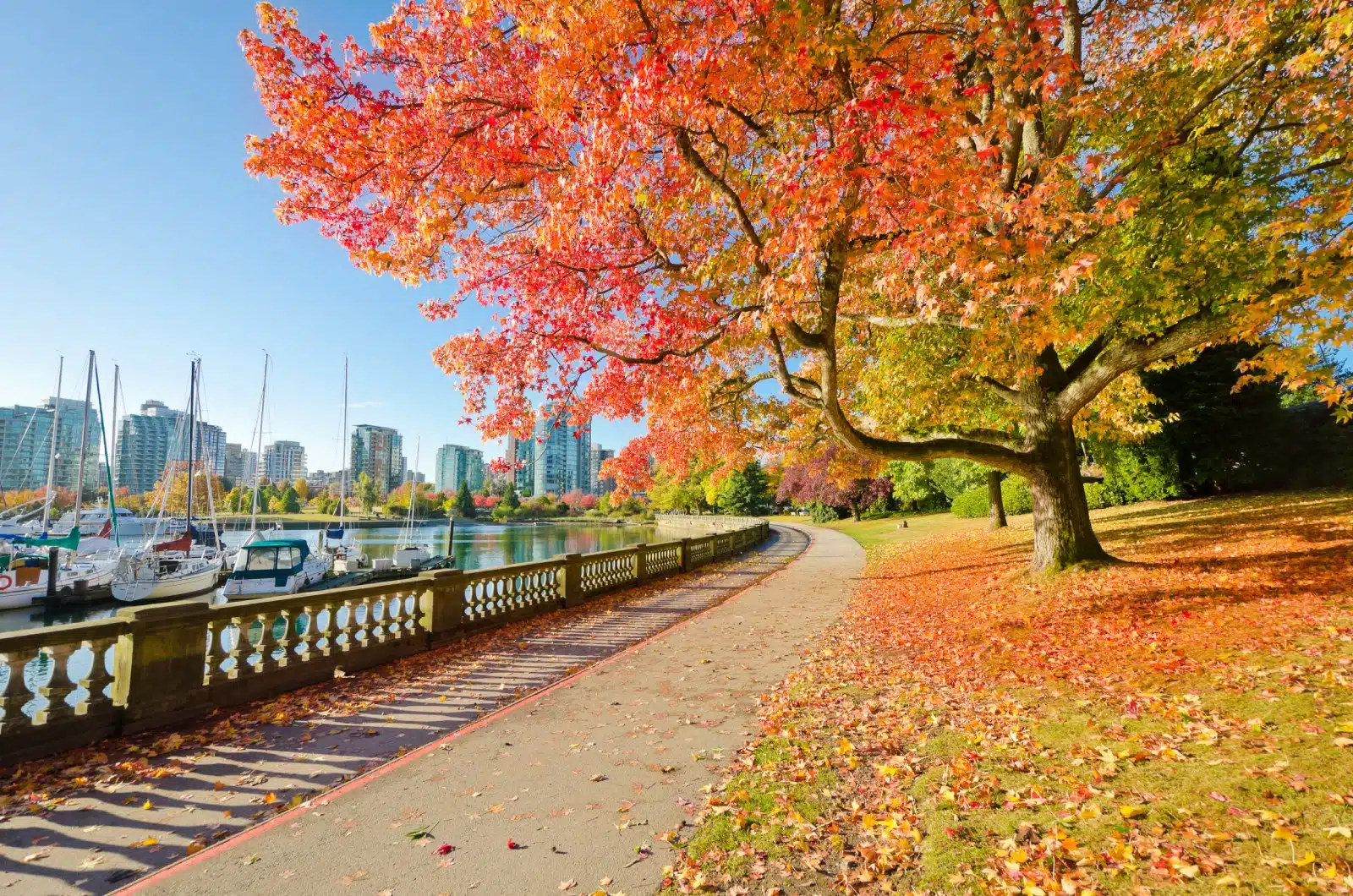
Image Credit: Shutterstock / romakoma
Vancouver, set between the Pacific Ocean and the Coast Mountains, is a vibrant city known for its outdoor lifestyle, diverse population, and culinary scene. The city’s natural attractions, such as Stanley Park and the Capilano Suspension Bridge, blend urban and natural experiences. Vancouver is also a starting point for exploring British Columbia’s coastal islands and the mountain resort of Whistler.
Insider’s Tip
Explore the city’s diverse culinary offerings at the Richmond Night Market, featuring dishes from around the world.
When to Travel
Vancouver’s mild climate makes it a year-round destination, with the summer months (June to August) ideal for outdoor activities and mild winters perfect for exploring the nearby mountains.
How to Get There
Vancouver International Airport offers numerous domestic and international flights. The city is also well-connected by train (VIA Rail) and bus services. By car, Vancouver is accessible via the Trans-Canada Highway from the east and Highway 99 from the U.S. border.
8. Whistler, British Columbia

Image Credit: Shutterstock / Ric Jacyno
Whistler, a world-renowned ski resort, offers a wide range of outdoor activities throughout the year. In addition to its exceptional skiing and snowboarding, Whistler’s summer activities include mountain biking, hiking, and golfing. The village’s lively atmosphere, with its shops, restaurants, and cultural events, adds to the appeal.
Insider’s Tip
Take the Peak 2 Peak Gondola for breathtaking views of the mountains and valleys that make Whistler so special.
When to Travel
Whistler is truly a year-round destination, with winter (November to April) for snow sports and summer (June to August) for hiking and biking.
How to Get There
The drive from Vancouver to Whistler along the Sea-to-Sky Highway (Highway 99) is about 2 hours and offers stunning landscapes. Shuttle buses also run regularly between Vancouver and Whistler. The nearest airport is Vancouver International Airport.
9. Tofino, British Columbia
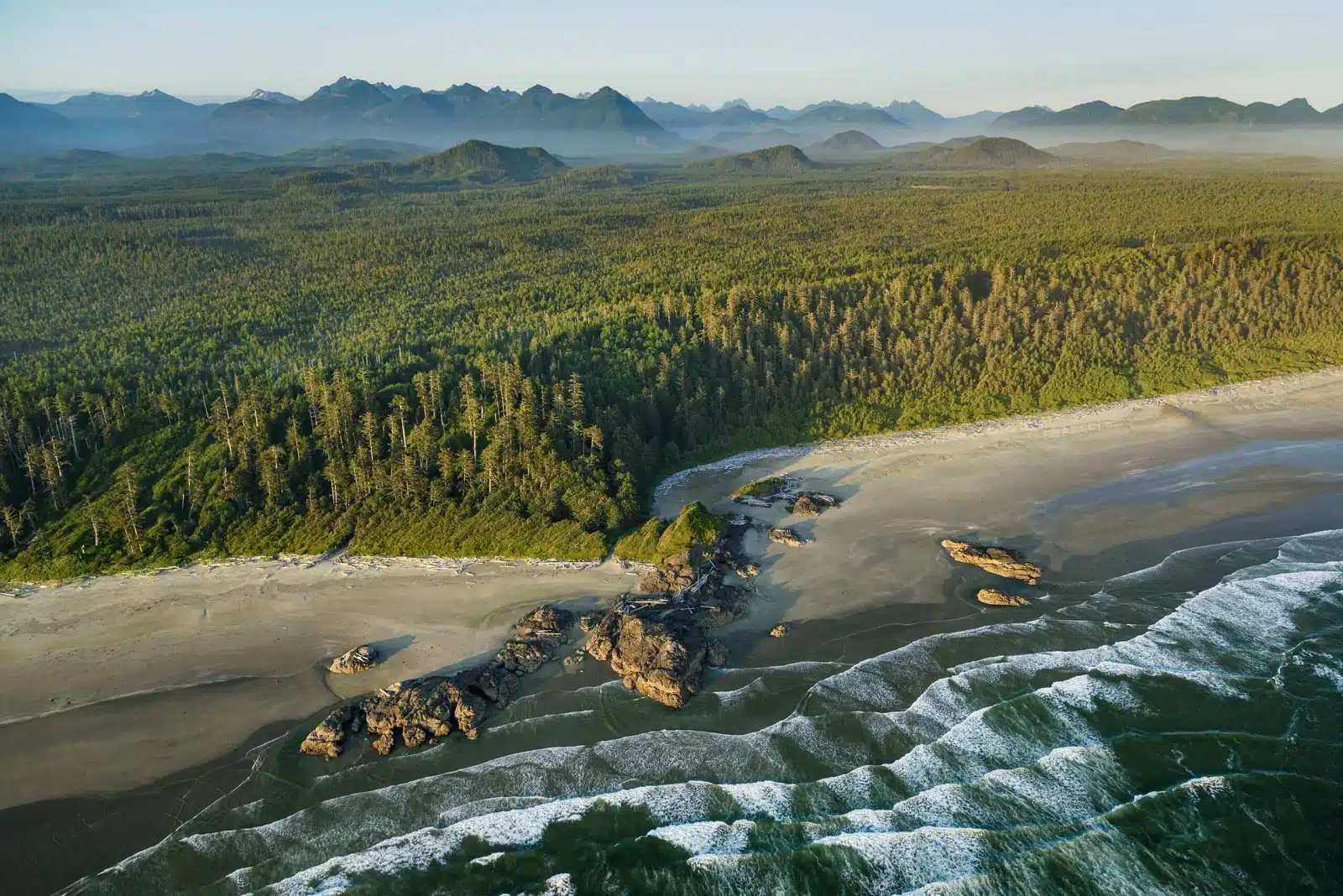
Image credit: Shutterstock / Danita Delimont
Tofino, located on Vancouver Island’s west coast, is a small district known for its rugged coastlines, temperate rainforests, and storm watching. It’s a haven for surfers, nature lovers, and anyone looking to connect with the raw beauty of British Columbia’s wilderness. Tofino’s culinary scene, focused on local seafood and foraged ingredients, complements the natural experiences.
Insider’s Tip
Experience storm watching from November to February, when the Pacific storms create dramatic seascapes and the opportunity for cozy retreats.
When to Travel
The best time to visit Tofino, British Columbia, is during the summer months from June to September for favorable weather conditions and outdoor activities and from November to February for storm-watching experiences.
How to Get There
Tofino is accessible by car from Vancouver Island’s eastern coast, a journey that includes a scenic ferry ride from Vancouver to Nanaimo followed by a drive across the island. Tofino-Long Beach Airport accommodates charter flights and seasonal services from Vancouver.
10. Prince Edward Island
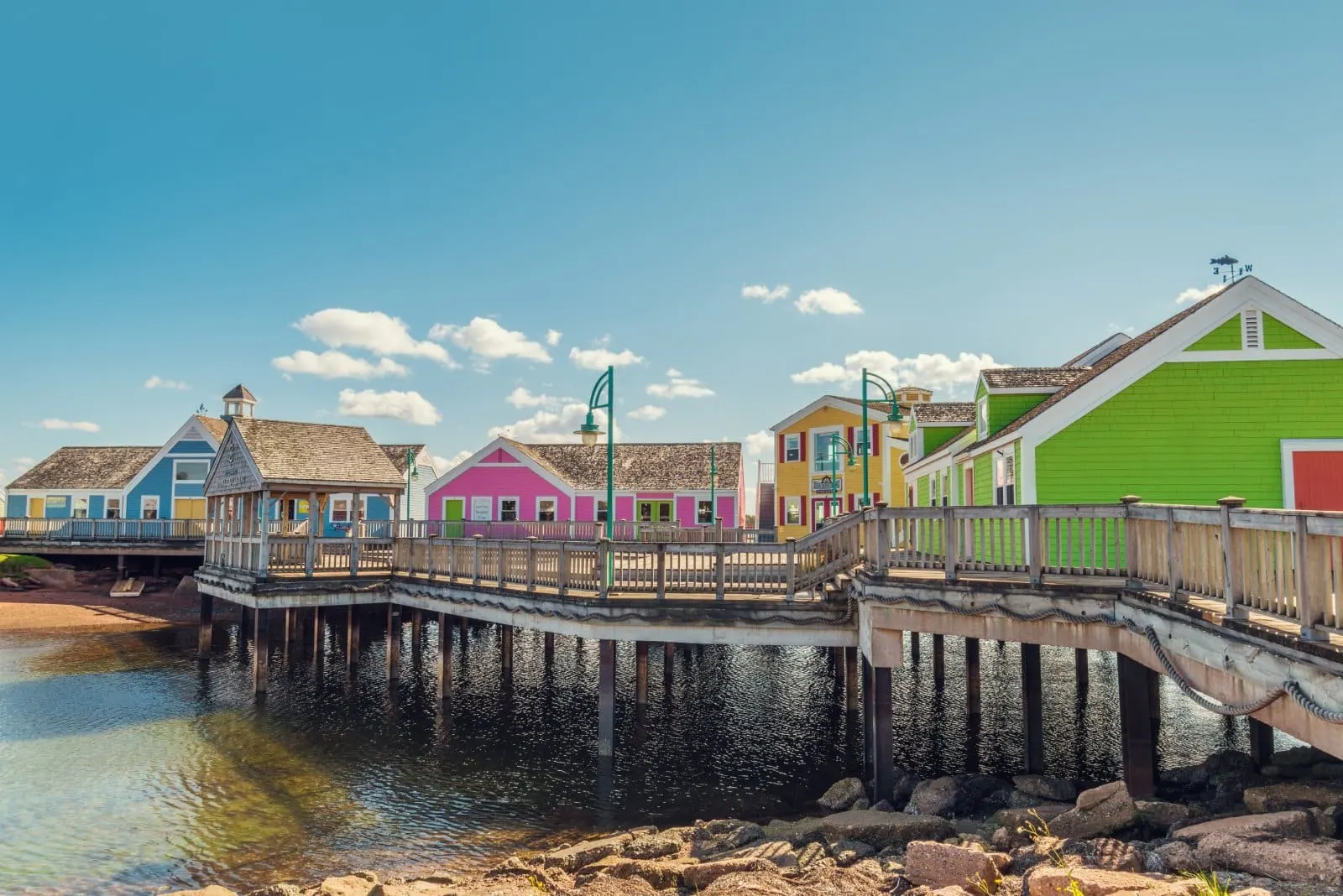
Image Credit: Shutterstock / hecke61
Prince Edward Island (PEI), Canada’s smallest province, offers a charming escape with its red sand beaches, rolling countryside, and maritime culture. Known for its seafood, particularly lobster and mussels, PEI is a foodie’s delight. The island’s scenic drives, including the coastal Green Gables Shore, provide a picturesque journey through quaint villages and past lighthouses.
Insider’s Tip
Cycle the Confederation Trail, a converted railway line that spans the island, offers a unique perspective on PEI’s landscapes and communities.
When to Travel
The optimal time to visit PEI is June to September, with warm weather perfect for beach explorations and vibrant local festivals. For those seeking tranquility and the beauty of autumn colors, May and September to October are ideal, offering mild weather and fewer tourists.
How to Get There
Charlottetown Airport is the main entry point by air, with flights from major Canadian cities. The Confederation Bridge connects PEI to New Brunswick for those driving, and ferry service is available from Nova Scotia. The island is also reachable via the Trans-Canada Highway.
The Bottom Line
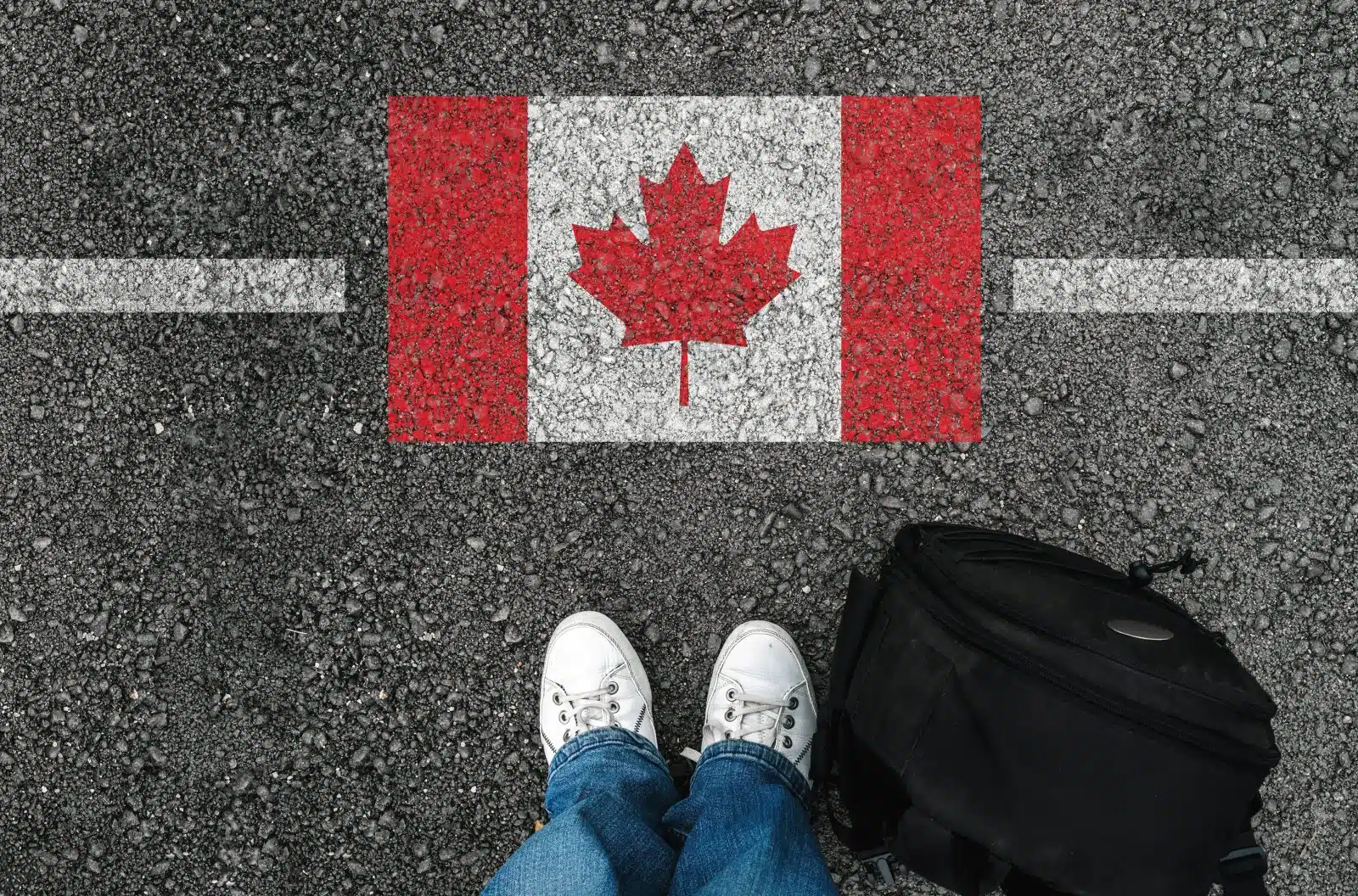
Image Credit: Shutterstock / GagoDesign
A coast-to-coast road trip across Canada is an invitation to explore the vastness and diversity of the country’s landscapes, cultures, and culinary traditions. From the eastern shores of Newfoundland to the western rainforests of British Columbia, each destination offers a unique experience that contributes to the mosaic of Canadian identity. As you plan your journey, remember that the true essence of a road trip lies not just in the destinations but in the adventures and stories that unfold along the way. Embrace the open road with an open heart, and let Canada’s beauty inspire you at every turn.
More From The Green Voyage
12 Best Practices for Sustainable Travel in 2024 – How to Travel With Minimal Environmental Impact
Unlocking Hotel Perks – A Traveler’s Guide to Maximizing Hotel Reward Programs for Optimal Benefits
Travel Hacks for Frequent Flyers – 6 Tips and Tricks to Make the Best of Air Travel
The post The Ultimate Canadian Road Trip 2024 – 10 Coast to Coast Adventures first appeared on The Green Voyage.
Featured Image Credit: Shutterstock / FS Stock.
For transparency, this content was partly developed with AI assistance and carefully curated by an experienced editor to be informative and ensure accuracy.
Tips for Trip Success
Book Your Flight
Find an inexpensive flight by using Kayak, a favorite of ours because it regularly returns less expensive flight options from a variety of airlines.
Book Your Hotel or Special Accommodation
We are big fans of Booking.com. We like their review system and photos. If we want to see more reviews and additional booking options, we go to Expedia.
You Need Travel Insurance!
Good travel insurance means having total peace of mind. Travel insurance protects you when your medical insurance often will not and better than what you get from your credit card. It will provide comprehensive coverage should you need medical treatment or return to the United States, compensation for trip interruption, baggage loss, and other situations.Find the Perfect Insurance Plan for Your Trip
